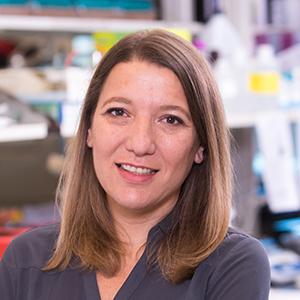Epigenetic Deregulation of Hematopoietic Cells with Aging and Disease

Maria "Ken" Figueroa
MDUniversity of Miami
Project Term: July 1, 2018 - June 30, 2023
Our lab is focused on understanding how age-related epigenetic deregulation contributes to driving the functional decline of the hematopoietic system we see as we age. We are using genome-wide sequencing approaches to understand the changes in human hematopoietic stem and progenitor cells (HSPC) with aging at epigenomic level, along with in vitro and in vivo modeling of key changes that we hypothesize are the responsible drivers of the aging decline phenotype. Our overarching goal is to identify key drivers of functional HSPC decline to ultimately develop methods for modulating these drivers and achieve HSC rejuvenation.
Blood cells are essential for oxygenating tissue, fighting infections and healing wounds. These cells are manufactured in the bone marrow by specialized stem cells known as hematopoietic stem cells (HSC). As we age, these HSCs begin to show signs of dysfunction, not only becoming less efficient at producing mature blood cells but also becoming more likely than their young counterparts to produce malignant cells, resulting in acute leukemias and myelodysplastic syndromes. Inside every cell in the body there is the genetic material, DNA, which contains the information required for a cell’s survival and function. Despite the variety of functions and lifespans of the body’s hundreds of specialized cells, they all contain identical genetic material. Similar to a computer that requires specialized software to be able to support the specific needs of different users, cells have specialized software that programs their well-defined functions. This specialized biological software is the epigenome of a cell and consists of a series of chemical modifications to the DNA, which tell the cells how they should behave by telling them which components of the genetic information need to be used at any given time. We have previously shown that as we age, the epigenetic code of HSCs becomes corrupted, putting these cells at risk for biological dysfunction. Studies have identified specific genes that become deregulated in aged HSC that contribute to their dysfunction. We will follow up on this observation, testing how Lamin A, a gene that functions to help maintain the nuclear structure and whose expression goes down significantly with age, may contribute to the functional changes seen in aged HSC. In addition, we will explore the origin of the epigenetic corruption by testing whether the changes originate within the HSC or whether they are secondary to signals from the bone marrow microenvironment, where HSCs reside. It is becoming increasingly clear that the microenvironment influences the nearby tumor cells of many cancer types, and our research will help clarify this interaction for leukemias and myelodysplastic syndromes. Finally, we will compare the age-related changes in HSC to the aberrant epigenetic programs identified in acute leukemias and myelodysplastic syndromes in order to identify which age-acquired abnormalities may contribute to the development of these malignancies and could thus be targeted for prevention or early intervention.